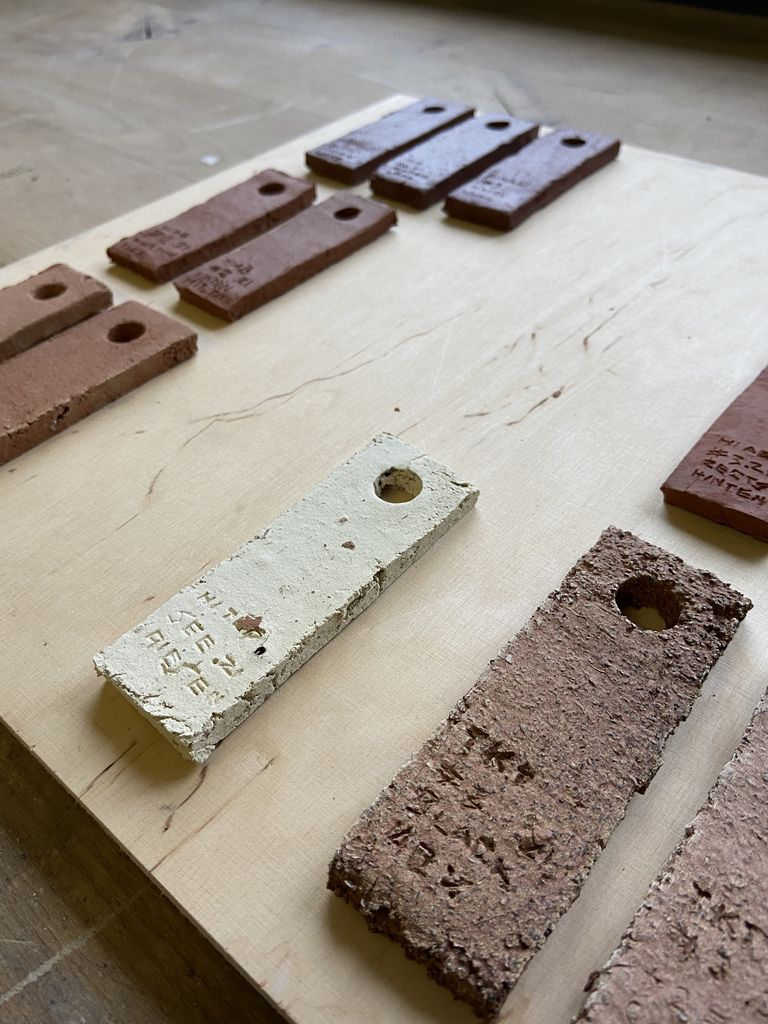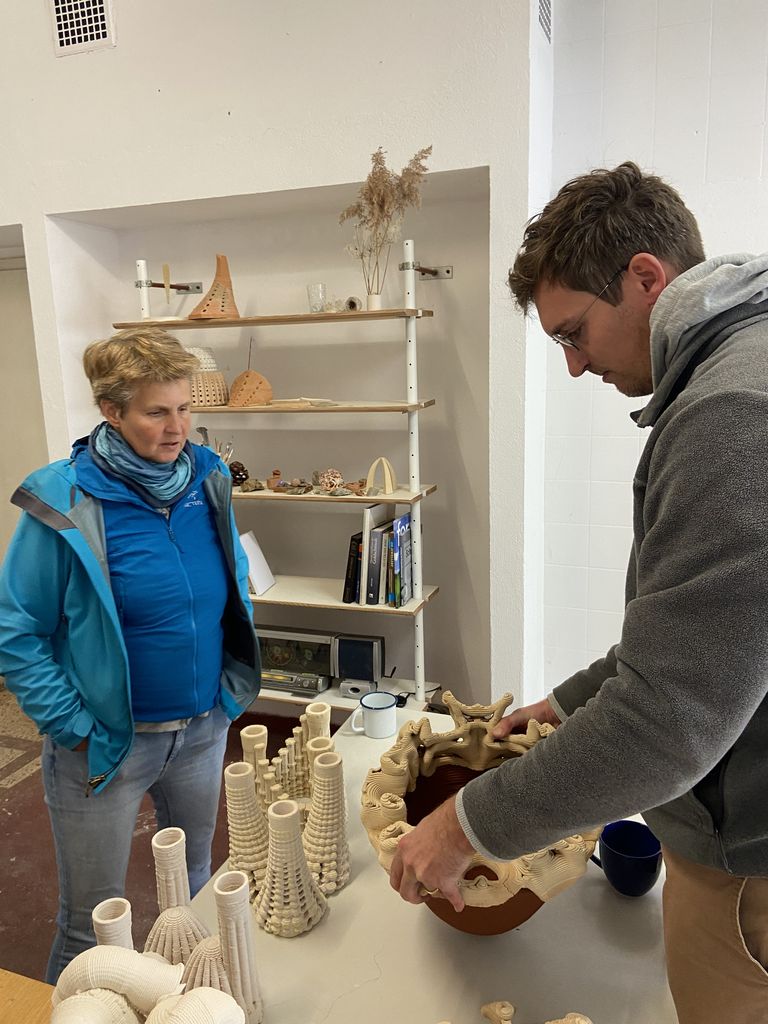SYMBIOTIC SPACES II Bombina
Symbiotic Spaces II Red is a pilot project that focuses on preservation of the endangered yellow-bellied toad (bombina variegata). Other than the first installation (White), this one is ecspecially developed to support the life cycle of the pioneer species. Laurin Kilbert developed the installation in Hildesheim (Germany) together with anthropologists as well as biologists of the Nature & Biodiversity Conservation Union (NABU Hildesheim).
Adult Yellow-Bellied-Toad at the amphibian biotope Hildesheim

Modules 3D printed from the local clay

yellow bellied toadlet hiding within the structure

a variety of species is attracted to the module as well

the pre-installed ponds can be gradually altered by the modules

The designs are based on transdisciplinary workshops and iterations. this draft was the preferred one by the biologists.

The realized prototype installed outside.

the installation is designed to enable the monitoring of the population

during mating season the hiding structures provide shelter for toadlets and toads.

local, raw clay of the biotope

testing tiles of the local clays

“Symbiotic Spaces II Red” is printed from the clay of the biotope in Hildesheim and stack like scales around the breeding pools of the yellow-bellied toad. The fired modules reveal their kinship with the city’s bricks in their red color. The material is found in the traditional brick buildings of the city, so its color open a symbolic dimension to shared spaces, pointing to the shared responsibility in a time of great species extinction.

habitat for non-humans from the same red clay

designing of a 3D printer for clay, together with the Symbiotic Spaces Collective

realized printer with an innovative pump for clay

workshop with biologists Frauke Imbrock & Christoph Petersen, to evaluate the first test prints after the design workshop.

International Volonteers at a environmentalist workshop in Hildesheim.
An amphibian biotope is testing ground for design processes, technologies & materials to implement the findings into future projects within public urban contexts. Due to the crisis of biodiversity, we are creating habitable installations that are printed with a self developed meso-scale 3D printer for clay.
The local amphibian biotope is a protected area for endangered species, as well as a former clay pit, that currently provides the material for the 3D printed structures.
“Symbiotic Spaces Red” is printed from the clay of the biotope in Hildesheim and stack like scales around the breeding pools of the yellow-bellied toad. The fired modules reveal their kinship with the city’s bricks in their red color. The material is found in the traditional brick buildings of the city, so its color open a symbolic dimension to shared spaces, pointing to the shared responsibility in a time of great species extinction.
INSTAGRAM
SYMBIOTIC SPACES COLLECTIVE
The Symbiotic Spaces Collective is winner of the New European Bauhaus Prize Rising Stars 2022

Thanks to all the supporters:





Laurin Kilbert
Laurin Kilbert is an artist, designer & co-funder of the symbiotic spaces collective, based in Germany. He explores the intersection of art, design, technology, and ecology.
